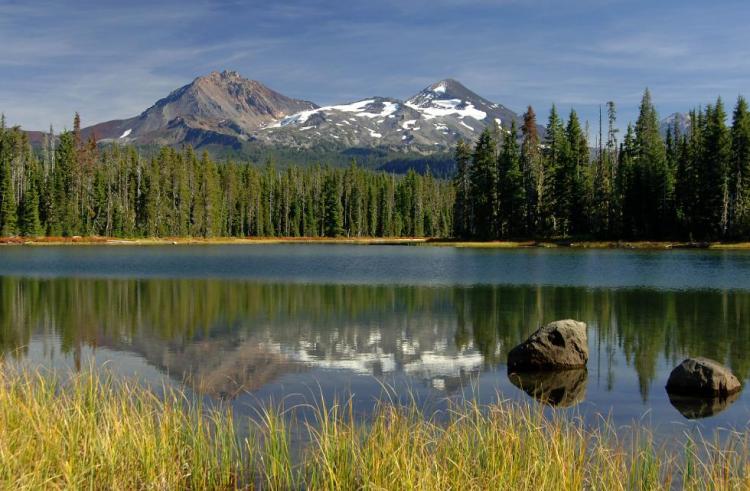
Natural lakes are relatively large bodies of freshwater surrounded by land. For the purposes of the Conservation Strategy, natural lakes are defined as standing water bodies larger than 20 acres, including some seasonal lakes.
Limiting Factors and Recommended Approaches
Limiting Factor: Water Quality
Non-point source pollution sometimes contains fertilizers, pesticides, or oil-based contaminants at levels high enough to cause significant lethal or sub-lethal effects in native fish and wildlife. Non-point source pollution can enter lakes through runoff from surrounding lands or streams, and from groundwater. In some lakes, use of recreational watercraft can degrade water quality through pollution.
Recommended Approach
Carefully consider recreational vehicle use and timing of use in sensitive water bodies. Continue compliance with water quality standards and pesticide use labels (DEQ and EPA). Implement Senate Bill 1010 (ODA) and DEQ Total Maximum Daily Load water quality plans.
Limiting Factor: Water Quantity
Water is limited in some parts of the state, and is projected to become scarcer under a changing climate and expanded human use. In standing waterbodies, water scarcity can lead to higher concentrations of contaminants, lowering water quality as less fresh water is available to dilute nutrients or pollutants. Airborne pollutants and runoff from recreational water vehicles are potential sources of contaminants in natural lakes. Late summer is a time of particular concern.
Recommended Approach
Where possible, follow the natural hydrological cycle for stream flow into lakes. (KCI: Water Quality and Quantity)